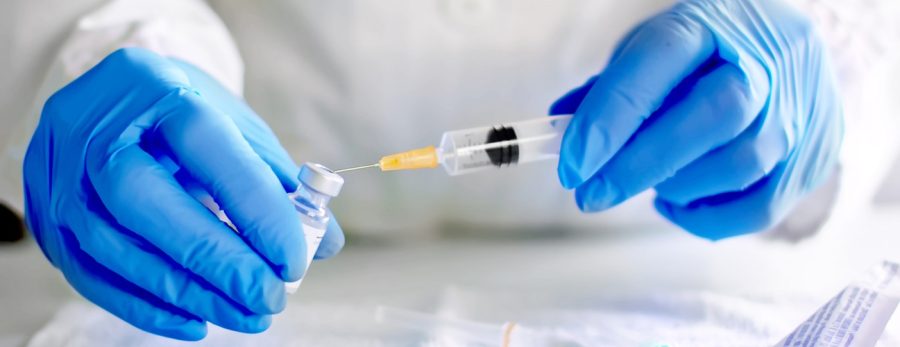For the start of Fall 2021, all students, faculty, and staff must be fully vaccinated against the COVID-19 virus, or have an approved exception or deferral to comply with the University of California’s vaccine mandate. Students who fail to request an exemption or receive their vaccination by Sept. 6 will not be allowed on campus or permitted to participate in university programs. Consequences of non-participation include dismissal from educational programs.
The UC system accepts all seven vaccines approved by the World Health Organization (WHO). International students who were unable to receive the vaccine in their home country or have received a vaccine not approved by the WHO had to submit an “International Students Unable to Access Vaccine” request by Sept. 2. They will be granted eight weeks upon arrival to receive their vaccine.
At UC San Diego, the vaccine mandate is part of a multi-pronged approach to curb the spread of COVID-19. In conjunction with the vaccine mandate, measures in the Return to Learn program include exposure and contact tracing, symptom screening, regular COVID-19 testing, and a mask policy. Depending on an individual’s vaccination status, the required measures vary.
Vaccinated students who have come into close contact with a COVID-19 case will be required to quarantine for seven days and conduct a COVID-19 test three to five days after exposure. Vaccinated students are still allowed to enter campus and attend class, but must wear a mask indoors, in residential common areas, and in crowded outdoor settings.
Similar to vaccinated students, unvaccinated students who are exposed to COVID-19 must quarantine and take a COVID-19 test. However, they are not allowed to enter campus or attend class. Unvaccinated students living on campus will also be relocated to quarantine housing. Those living off-campus have the option to move into quarantine housing.
Some UCSD students expressed their support of the mandate and its benefits. In an interview with The UCSD Guardian, Roger Revelle College junior Rushil Pithia told The Guardian, “I think both the vaccine mandate and the mask policies are crucial in prioritizing the health of students.”
Yet, despite the comprehensive Return to Learn policies aimed at curbing the spread of the disease, some students have already found that their classes have moved online abruptly. Given that students anticipate in-person lessons, such changes may be disappointing.
For students like Pithia, in-person education is invaluable, as it provides “the ability to be more hands-on and interactive with the content.”
While vaccine mandates are still the subject of major public debate, the requirement appears to be bearing fruit. San Diego State University, which had started its semester in August, yielded a .58 percent positivity rate. Since Aug. 20, the university has had 175 student COVID-19 cases amongst a 33,000-strong student population and a .47 percent positivity rate.
This pales in comparison to public universities in other states. Florida State University has recorded 2869 COVID-19 cases since August and has a 3.48 percent positivity rate. As of Sept. 17, none of Florida’s 12 public universities enforces a vaccine mandate, and only the University of Miami requires its employees to be vaccinated.
As the local COVID-19 situation continues to change rapidly, the Return to Learn program not only remains abreast with new developments, but also anticipates worrying trends by studying various factors.
Dr. Robert Schooley, one of the professors heading the Return to Learn program, told The Guardian in an interview that the Return to Learn program “monitor(s) multiple data streams every day to ascertain whether there are any concerning signals of an increasing incidence of SARS CoV-2 infection.”
In addition to comprehensive contact tracing, these data streams include the number and distribution of COVID-19 positive wastewater signals, the local COVID-19 incidence rate, the general infection demographic in San Diego, the hospitalization rate, student behavior, and police reports.
For instance, wastewater signals might lead the Return to Learn program to begin testing people possibly contributing to the waste stream. Similarly, contact tracing helps identify locations or events that are responsible for infection clusters.
Schooley added that the data gathered from the Return to Learn Program is analyzed to find trends that can inform preemptive changes to public health policy.
“We look for trends in key parameters to make decisions proactively before thresholds are reached,” Schooley explained. “Threshold-based decision-making has been one of the biggest failures of public health policy-making.”
After monitoring the rates of these factors, UCSD administrators decide if COVID-19 measures should be relaxed or tightened.
For more information about how to stay safe during the COVID-19 pandemic, students can visit the Return to Learn website to learn more about the vaccine mandate, exposure and contact tracing, and COVID-19 testing and screening.
Photo courtesy of Hopkins Medicine















CBD Chocolate • Oct 6, 2021 at 3:07 am
Thank you for sharing this. I support the view that vaccination is an important and mandatory topic. But a lot of people refuse and are afraid of this. Quite controversial for me is the decision not to let unvaccinated students into the campus. After all, every citizen has the right to education.